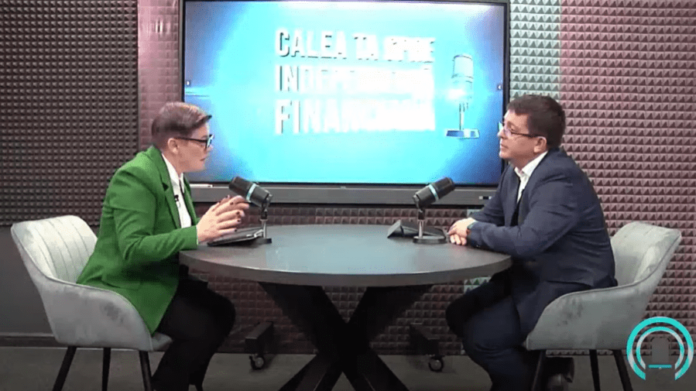The 9th edition of the podcast “Da Sens Banilor” (Giving Meaning to Money) provides clear explanations that the National Bank of Moldova (NBM) does not set the exchange rate of the Moldovan leu but calculates it. In an interview with journalist Liliana Barbăroșie, Daniel Savin, the Director of the Financial Markets Department at the NBM, clarified that the NBM, in fact, “calculates the exchange rate of the leu based on real market transactions. So, it is not the result of an algorithm or a curve; it is the result of supply and demand for foreign currency.”
In the interview, Director Daniel Savin also shares information about the department he leads at the NBM. This department has three main areas of activity: the implementation of monetary policy, which involves operations related to mandatory reserves, and analysis of the foreign exchange market. Another important activity is the management of foreign exchange reserves, and the third essential activity is acting as an agent of the state.
“Foreign currency is like a commodity. It has a price. Both buyers and sellers influence the price of this commodity. When there is an increased demand for foreign currency in the market, meaning there are more buyers, we try to understand the factors influencing the increased demand. I would divide the factors related to the exchange rate into two categories: economic and non-economic. When referring to economic factors, it’s important to mention that throughout a calendar year, we have various periods: we have the cold season, we have summer, when less energy is consumed, and when we have more remittances. These economic factors can be further divided into seasonal and non-seasonal factors.
FOR THE MOST IMPORTANT NEWS, FOLLOW US ON LINKEDIN!
In our analyses, we see a projection of seasonal factors. For example, during the winter when energy consumption generally increases, there is increased demand for foreign currency, which usually leads to a depreciation of the exchange rate. Because as demand rises, the price increases. In the category of seasonal factors that influence appreciation, we could see exports, such as the export of cereal products in the summer and autumn. Or during holiday periods, when remittances increase, we have an increased supply of foreign currency, and usually, during these periods, we can observe an appreciation of the exchange rate. So, these are seasonal factors.
In the category of non-seasonal factors, we have any factors that lead to additional demand or supply of foreign currency. For example, in cases where certain transfers, grants, loans, etc., increase, there is additional foreign currency available for sale in the market, and this is an appreciation factor because it increases the supply volume. And monetary policy decisions are non-seasonal economic factors. If we talk about non-economic factors, here we can specifically talk about unique effects or crises, mini-crises. For example, the COVID-19 crisis, the war in Ukraine, the energy crisis. These factors have, at certain stages in the last three to four years, created a deficit or increased demand for foreign currency, and we have seen a trajectory towards a depreciation of the exchange rate,” stated Daniel Savin, Director of the Financial Markets Department at the National Bank of Moldova.
In the “Brief Money” section, Daniel Savin also discussed foreign currency sold on the market in the Republic of Moldova.
The full interview can be watched below.


